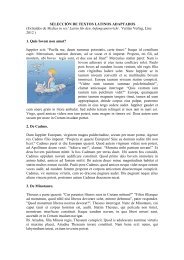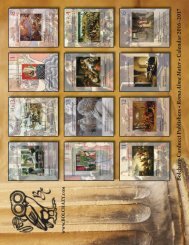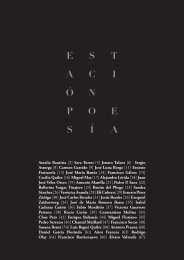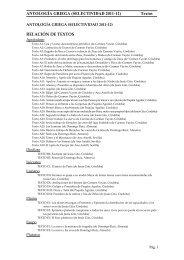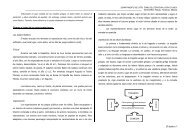Ammaia-Uma-cidade-romana-LR
Ammaia-Uma-cidade-romana-LR
Ammaia-Uma-cidade-romana-LR
Create successful ePaper yourself
Turn your PDF publications into a flip-book with our unique Google optimized e-Paper software.
4 5emerged on the main crossroads of the road network.Furthermore, an extensive network of rural farms wasresponsible for the exploitation of the landscape.Some were relatively small and served to supply thetown with the necessary goods for its daily subsistence,such as food, building stone, wood and metal.Others, located further away from the urban centre,developed into large villa estates, such as at Torrede Palma. Most of these large villa estates producedgoods, such as olive oil, wine and horses, partly forexport to external markets. Architecturally they wereexponents of the Roman Mediterranean way of life,richly decorated with marble and mosaics and oftenincorporating bathing facilities in addition to residentialand industrial or artisanal functions. Besidescrop cultivation and livestock farming (cattle, sheep,pigs), another important economic activity in thestudy area was the mining of mineral resources,mainly iron and lead. Remains of these extractiveactivities are plentiful in the territory of <strong>Ammaia</strong>.More valuable minerals such as gold (near the Tagus)and rock crystal, for the manufacture of glass andjewellery, were mined as well. The importance ofrock crystal is illustrated by two references in theNaturalis Historia by Pliny the Elder, to the presenceof the mineral in the hills around <strong>Ammaia</strong>.This system of the well-organized town and marketcentre of <strong>Ammaia</strong> and its rural and industrialhinterland flourished deep into the fourth century.From the fifth century onwards the decline andfinal collapse of the Roman economic system andthe invasion of Germanic peoples (Sueves, Vandals,Alans) resulted in a gradual abandonment of theurban centres of Lusitania. While some, like Méridaknew continuity under the subsequent Visigothicrule, that from the year 585 incorporated the entirePeninsula, many others like <strong>Ammaia</strong> declined graduallyand were sometimes completely abandoned.F.V.eram relativamente modestos, servindo para abastecera <strong>cidade</strong> dos bens necessários à subsistência diária,como alimentos, pedra para construção, madeira emetal. Outros, mais distantes do centro urbano, transformaram-seem grandes propriedades rurais (villae),como é o caso de Torre de Palma. Na sua grande maioria,estas villae dedicavam-se à produção de azeite,vinho ou à criação de cavalos, em parte destinados àexportação. Em termos arquitetónicos, eram expoentesdo modo de vida mediterrâneo romano, ricamenteornamentadas com mármore e mosaicos e, em geral,incluíam instalações para banhos, a par da área residenciale das estruturas ligadas às funções laborais ede manufatura. Para além da agricultura e da criaçãode gado (bovino, ovino e suíno), a exploração dosrecursos minerais, principalmente ferro e chumbo,constituía outra atividade económica importante,sendo abundantes os vestígios da extração mineirano território de <strong>Ammaia</strong>. Também os minerais maisvaliosos foram explorados, como o ouro (perto doTejo) e o cristal de rocha, para o fabrico de vidro ejoalharia. A importância do cristal de rocha é ilustradapor duas referências à presença deste mineral na serrade São Mamede, incluídas na Naturalis Historia dePlínio o Velho.O modelo estabelecido em <strong>Ammaia</strong>, uma <strong>cidade</strong> bemorganizada dotada de mercado e de um territóriorural e industrial, floresceu ao longo do século IV.A partir do século V, o declínio e o derradeiro colapsodo sistema económico romano, bem como a invasãode povos germânicos (Suevos, Vândalos, Alanos),ditaram o progressivo abandono dos centros urbanosda Lusitania. Enquanto algumas <strong>cidade</strong>s, comoMérida, se mantiveram sob o subsequente domíniovisigodo, que a partir do ano 585 se apoderou de todaa Península Ibérica, muitas outras, à semelhança de<strong>Ammaia</strong>, entraram gradualmente em declínio e foram,em alguns casos, completamente abandonadas.F.V.9



